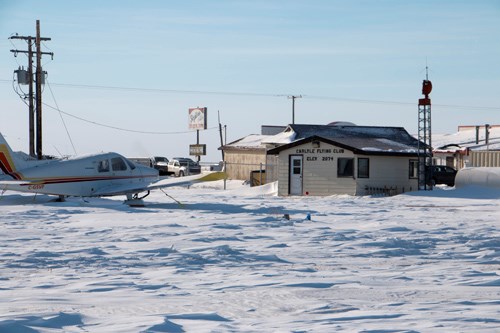With many oil companies working in the area there has been continued discussion of improving and upgrading the Carlyle airport to accommodate a demand to make the airport accessible to corporate flights. Many oil patch executives have, over the years, expressed interest in flying in and out of the area and this interest has now resulted in the Carlyle Airport Authority conducting a feasibility study of the subject.
The question has fostered debate and discussion opened approximately one year ago as the local Airport Authority in Carlyle brought up the idea of expanding the runway and adding new technical instruments. These improvements include a Wide Area Augmentation System (WAAS) and an Automated Weather Observing System (AWOS) to allow for larger aircraft needing a longer runway as well as allowing aircraft with instruments which utilize these systems to land in poor conditions.
"The whole reason for this is to make Carlyle accessible to bigger aircraft, corporate aircraft, and instrument aircraft to be able to land in pretty much all weather," Duncan Brown, a member of the Airport Authority, explained.
WAAS was designed for correcting GPS signal errors caused for various reasons including ionospheric disturbances and satellite orbit errors according to Garmin, a GPS company based in the United States. Essentially it makes the GPS system being used more accurate and can put the pilot within three metres of their actual position, where as GPS can be out by nearly 15 metres at times, the Garmin website states.
The AWOS system provides real-time weather information, which is an additional safety measure as it provides vital information regarding airport weather when landing.
Though brought up one year ago amongst members of the Airport Authority the idea was fairly quickly made a non-priority according to Brown because of costs and being unsure of their ability to accomplish the improvements. However, as discussion continued the idea was brought again to the forefront and the Airport Authority has been conducting a feasibility study.
Deciding to revisit these plans came with the willingness of Canadian Energy Services to pay for the GPS approach system known as WAAS, which in itself costs approximately $44,000.
"It was brought up about a year ago initially and was put on the back burner," Brown stated. "Then Canadian Energy Services offered to pay for the GPS approach system so we're back looking at it to see how we can do this."
Brown said that in order for WAAS to work properly in Carlyle the trees at the west end of the runway would need to be eliminated, which also allows for the Airport Authority to lengthen the runway.
The planned improvements won't affect the small aircrafts already flying in and out of Carlyle; but, the improvements will make the airport more accessible to corporate aircraft which is intrinsically linked to the oilfield activity in the area.
"General aviation pilots don't really require it because we don't typically fly in poor weather, but corporate aircraft, predominantly oil patch execs, need it," Brown said.
The improvements will also assist Medevac airplanes to land at the Carlyle airport in case of an emergency in the area.
The Airport Authority estimates the total cost of the project to be nearly $250,000 and, at the moment, Brown is hopeful they will be able to raise enough money for half of this. If able to achieve $125,000 then the Community Airport Partnership (CAP) grant program will possibly see the value in the improvements and assist with the remainder.
Therefore, the Airport Authority is actively looking for people and companies to help sponsor the project as their efforts will, if improvements are approved, mainly assist corporations in the oilfield and those in need of Medevac.
Brown said that both he and Blair Andrew, president of the local Airport Authority, would be pleased to speak with anyone further on the subject and answer any questions.
Overall Brown explained they are hopeful of moving forward in the project and working alongside the town of Carlyle, surrounding Rural Municipalities, as well as the corporations who have shown interest in utilizing the airport if these improvements are realized.




